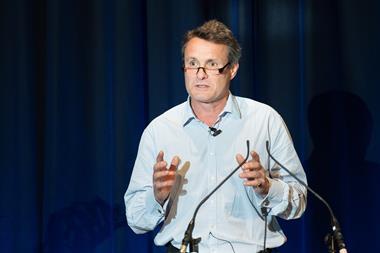The thawing of permafrost could accelerate climate hazards and release disease-carrying pathogens
We live in a world where billionaires can take day trips into the stratosphere, crypto assets are challenging financial norms and climate change is changing the very substance of our physical environment.
New risks are arising while the global community deals with known challenges such as the pandemic, war in Ukraine, economic turbulence and failing trust in established social institutions.
Swiss Re’s tenth SONAR report scans the horizon for emerging risks for the insurance industry.
Patrick Raaflaub, group chief risk officer at Swiss Re, says: “A global pandemic, geopolitical conflicts, surging inflation and an unstoppable climate crisis – these are just some of the many risks that SONAR has examined over the past decade that have ultimately materialised.
”However, researching new risks is not about forecasting. It is about raising awareness of risks that may impact society and preparing ourselves accordingly.”
New generation of climate-related risks
Beyond what we can already see, climate change creates a new generation of emerging risks.
This year’s SONAR report explores how the thawing of permafrost, which covers a quarter of the northern hemisphere, could not only damage infrastructure and accelerate climate hazards but also release disease-carrying pathogens that have been frozen for decades.
Agriculture is an activity that is especially susceptible to climate change – yet it is also an area that is struggling to reduce its contribution to global warming.
Emissions from global food production account for about 31% of total man-made carbon emissions. The challenge for agriculture is to improve productivity and feed more people while cutting emissions at the same time.
Insurers can play a vital role in faster adoption and scaling up of sustainable farming practices by offering suitable coverage solutions and facilitating climate-smart and regenerative agriculture.
How can crypto assets be insured?
In the current highly technology-dependent financial system, cryptocurrencies such as Bitcoin and Ether have established themselves as potential challengers to conventional currencies.
Alongside these new forms of currency, further crypto assets have emerged. Tokens, for example, allow people to buy digital representations of real assets such as art works or real estate. Nowadays, an art lover can buy a fraction of a Picasso.
The fluid ownership, taxation, regulatory issues and other risks related to the new asset classes present insurers with fresh challenges. For instance, are certain crypto assets implicitly covered by existing property or cyber policies?
The security of the new digital financial economy is also facing new risks. With quantum computing, for example, a new generation of computers is on the verge of completing tasks far beyond the reach of current machines.
These hyper-smart technologies offer significant benefits: sophisticated weather modelling, advanced medical research capabilities and financial analysis.
With increasing maturity, they can also become a threat to existing IT-security protocols, potentially hacking standard encryption keys used in online communications and data transfer.




















No comments yet